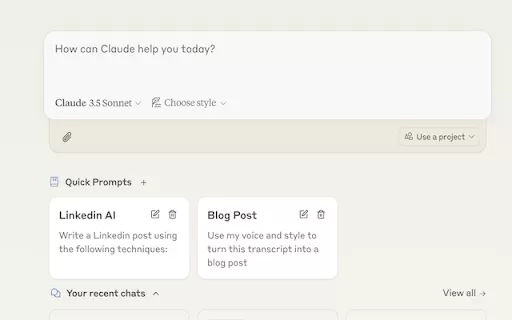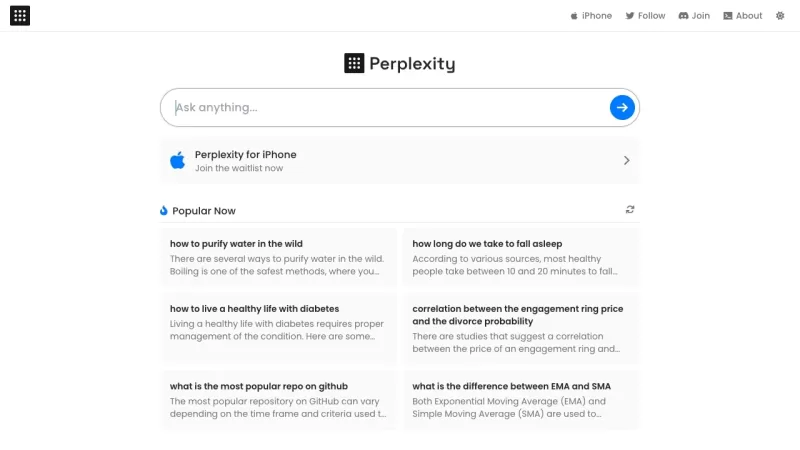Unleash Your Inner Warrior with the Power of Focused Intention

 April 30, 2025
April 30, 2025

 HarryGonzalez
HarryGonzalez

 0
0
In today's world, where distractions are endless, tapping into your inner warrior to maintain focus and discipline is more crucial than ever. This piece explores practical strategies to enhance your concentration, foster resilience, and turn daily challenges into opportunities for personal growth and mastery.
Key Points
- Cultivate Mindfulness: Learn to remain present and grounded amidst life's chaos.
- Set Clear Intentions: Define your goals with clarity and purpose.
- Embrace Discipline: Develop habits that bolster your focus and commitment.
- Master Your Energy: Optimize your physical and mental health for peak performance.
- Transform Challenges: See obstacles as stepping stones for growth and learning.
The Essence of the Inner Warrior
What Does It Mean to Be an Inner Warrior?
The idea of the inner warrior goes beyond mere physical strength; it's about mental resilience, unwavering discipline, and deep self-awareness. It's about confronting life's challenges with courage, resilience, and a steadfast commitment to your goals. To truly embody your inner warrior, you must grasp the key elements that fuel this transformative mindset.
At its heart, being an inner warrior is about cultivating mindfulness. This means training your mind to stay present, observant, and non-judgmental, no matter the external circumstances. Through practices like meditation, deep breathing, and mindful movement, you can anchor yourself in the present moment, reducing the impact of distractions and fostering inner peace.

Setting clear intentions is equally vital. Without a well-defined goal, your efforts can become scattered and ineffective. The inner warrior knows precisely what they want to achieve and why. These intentions serve as a compass, guiding your actions and decisions, ensuring you stay on course even when faced with adversity.
Discipline forms the backbone of the inner warrior's mindset. It's the consistent application of effort, even when motivation dips. Discipline involves creating routines, setting boundaries, and holding yourself accountable. It's about making choices that align with your long-term goals, rather than succumbing to immediate gratification.
Mastering your energy is another crucial aspect. The inner warrior understands the interconnectedness of mind, body, and spirit. By eating nutritious food, engaging in regular exercise, and prioritizing restful sleep, you optimize your physical and mental well-being, ensuring you have the energy needed to pursue your goals with vigor.
Finally, the inner warrior sees challenges as opportunities for growth. Rather than being discouraged by setbacks, they analyze what went wrong, learn from their mistakes, and emerge stronger and wiser. This mindset transforms obstacles into stepping stones on the path to self-mastery.
In essence, embracing your inner warrior is about adopting a holistic approach to life, encompassing mindfulness, intention-setting, discipline, energy management, and a growth-oriented mindset. It's about becoming the best version of yourself, capable of facing any challenge with grace and strength. By integrating these principles into your daily life, you can unlock your full potential and live a life of purpose and fulfillment.
Practical Techniques for Cultivating Focus
Mindfulness Meditation
Mindfulness meditation is a powerful tool for sharpening your focus and clearing mental clutter. It involves sitting comfortably, focusing on your breath, and gently redirecting your attention when your mind wanders. Regular practice can enhance your ability to stay present and improve your overall concentration.
How to practice Mindfulness Meditation:
- Find a quiet space: Choose a spot where you won't be disturbed. Ensure it's a quiet environment to minimize outside noises.
- Sit comfortably: Sit with your back straight but not stiff. You can sit on a chair or on the floor.
- Focus on your breath: Pay attention to the sensation of your breath entering and leaving your body.
- Acknowledge thoughts: When your mind wanders, gently acknowledge the thought without judgment and redirect your attention back to your breath.
- Start small: Begin with 5-10 minutes of meditation per day and gradually increase the duration as you become more comfortable.
Mindfulness meditation helps you become more aware of your thoughts and emotions, allowing you to manage distractions more effectively and cultivate a state of focused awareness.
Pomodoro Technique
The Pomodoro Technique is a time management method that breaks down work into intervals, traditionally 25 minutes in length, separated by short breaks. This technique can boost focus and productivity by creating a sense of urgency and preventing mental fatigue.
How to use the Pomodoro Technique:
- Choose a task: Identify a specific task you want to focus on.
- Set a timer: Set a timer for 25 minutes.
- Work on the task: Focus solely on the task until the timer rings.
- Take a short break: Take a 5-minute break to rest and recharge.
- Repeat: Repeat steps 2-4 four times, then take a longer 20-30 minute break.
The Pomodoro Technique helps you stay focused and motivated by breaking down work into manageable chunks and providing regular breaks to prevent burnout. It also creates a sense of accomplishment as you complete each interval.
Energy Management
Your ability to focus is closely tied to your physical and mental energy levels. Optimizing your energy through proper nutrition, exercise, and sleep can significantly enhance your concentration and ability to stay on task.
Strategies for Energy Management:
- Nutrition: Eat a balanced diet rich in fruits, vegetables, and whole grains. Avoid processed foods, sugary drinks, and excessive caffeine.
- Exercise: Engage in regular physical activity to boost circulation, reduce stress, and improve cognitive function. Aim for at least 30 minutes of moderate exercise most days of the week. Whether it's a quick jog or yoga, anything to get the blood flowing can help.
- Sleep: Prioritize 7-8 hours of restful sleep per night to allow your brain to recover and consolidate information.
- Hydration: Drink plenty of water throughout the day to stay hydrated and maintain optimal brain function.

By managing your energy levels, you can ensure that you have the mental and physical resources needed to maintain focus and perform at your best.
Practical Exercises to Improve Your Discipline
Establish a Morning Routine
A consistent morning routine can set the tone for the entire day, helping you establish a sense of structure, purpose, and discipline. By starting your day with intentional activities, you can prime your mind for focus and productivity.
Elements of a successful Morning Routine:
- Wake up at the same time: Train your body to wake up without the use of an alarm to establish a natural and consistent routine.
- Mindfulness practice: Even if it's only 5 minutes, start with a mindful practice to put you in a calm and relaxed state of mind for the day.
- Plan for the day: Determine what your priority tasks are, so you're prepared for a day full of success.
Developing a consistent morning routine can enhance your self-discipline and set the stage for a focused and productive day.
Limit Distractions
In today's digital age, distractions are everywhere. Limiting these distractions is essential for improving your focus and discipline. By creating a distraction-free environment, you can enhance your ability to concentrate and stay on task.
Strategies for Limiting Distractions:
- Turn off notifications: Disable notifications on your phone and computer to minimize interruptions.
- Create a dedicated workspace: Designate a specific area for work or study that is free from distractions.
- Use website blockers: Install website blockers to prevent access to distracting websites during work hours.
By minimizing distractions, you can create a more conducive environment for focused work and improve your overall self-discipline.
Practice Delayed Gratification
Delayed gratification is the ability to resist the temptation of immediate rewards in favor of long-term goals. This skill is fundamental to self-discipline and can be cultivated through intentional practice.
How to Practice Delayed Gratification:
- Set a goal: Identify a specific goal you want to achieve.
- Resist immediate temptations: Whenever you're tempted to indulge in immediate gratification, remind yourself of your long-term goal.
- Reward yourself later: Promise yourself a reward once you've achieved your goal.
Through consistent practice, you can strengthen your self-discipline and improve your ability to delay gratification.
Potential Challenges and How to Overcome Them
Pros
- Increased Self-Confidence
- Greater Resilience
- Enhanced Focus and Concentration
- Deeper Sense of Purpose
- Improved Physical and Mental Well-Being
Cons
- Risk of Burnout
- Potential for Isolation
- Difficulty Balancing Strength and Compassion
- Overemphasis on Personal Achievement
- Neglecting Rest and Recovery
FAQ
How can I stay motivated when I feel like giving up?
Staying motivated can be tough, especially when facing setbacks or feeling overwhelmed. One effective strategy is to break down your goals into smaller, more manageable tasks. Each time you complete a task, you experience a sense of accomplishment, which can boost your motivation and keep you moving forward. Remind yourself of why you started in the first place and focus on the positive outcomes of achieving your goals.
Visualization is another powerful tool for staying motivated. Take a few minutes each day to visualize yourself successfully achieving your goals. Imagine how you will feel, what you will gain, and the positive impact your success will have on your life. This mental rehearsal can strengthen your commitment and make your goals feel more tangible.
Finally, surround yourself with a supportive network of friends, family, or colleagues who can provide encouragement and accountability. Share your goals with them and ask them to check in on your progress. Having someone to cheer you on and hold you accountable can make a significant difference in your ability to stay motivated and persevere through difficult times.
In summary, breaking down your goals, practicing visualization, and building a supportive network can help you stay motivated and maintain your commitment to achieving your goals, even when faced with challenges. Remember that setbacks are a normal part of the process, and by adopting a growth mindset, you can turn these setbacks into opportunities for learning and improvement.
Related Questions
What are the benefits of embracing my inner warrior?
Embracing your inner warrior can lead to a multitude of benefits, transforming your life in profound ways. At the core, it cultivates a heightened sense of self-confidence. As you face challenges with courage and determination, you begin to trust your abilities and believe in your potential. This self-assurance empowers you to take risks, pursue your dreams, and overcome obstacles that once seemed insurmountable. With confidence, you become an unstoppable force.
Your inner warrior also helps to cultivate resilience during tough times. Life is full of ups and downs, but with a strong inner warrior, you're prepared for whatever comes next. An inner warrior also fosters a deeper sense of purpose. You know what you want and how to get there. There's nothing stopping you from taking the action needed to reach your goals and dreams.
It's clear to see that embracing your inner warrior leads to positive changes that will better your life and the lives of those around you.
Related article
 Three Solutions to Resolve Eleven Labs' AI Voice Generation Issues
If you're a fan of Eleven Labs, the go-to AI voice generator, you might have run into some hiccups along the way. Don't worry, though; this article is here to help you navigate those frustrating issues and keep your AI voice content flowing smoothly. From dealing with IP address restrictions to veri
Three Solutions to Resolve Eleven Labs' AI Voice Generation Issues
If you're a fan of Eleven Labs, the go-to AI voice generator, you might have run into some hiccups along the way. Don't worry, though; this article is here to help you navigate those frustrating issues and keep your AI voice content flowing smoothly. From dealing with IP address restrictions to veri
 Pika.art Unveils New AI Video Features and Updates in Redesign
Pika.art, a trailblazer in the AI-driven video generation scene, has just rolled out a major facelift. The platform's website has undergone a complete redesign, and they've introduced some game-changing features that promise to elevate your video-making experience. These updates are all about making
Pika.art Unveils New AI Video Features and Updates in Redesign
Pika.art, a trailblazer in the AI-driven video generation scene, has just rolled out a major facelift. The platform's website has undergone a complete redesign, and they've introduced some game-changing features that promise to elevate your video-making experience. These updates are all about making
 AI Inpainting: Enhancing Images with Advanced AI Technology - Features and Applications
If you're passionate about digital imagery, you'll find Inpainting AI to be a game-changer. This innovative technology harnesses the power of artificial intelligence to repair, enhance, and even creatively transform images. Whether you're a professional photographer aiming to remove unwanted element
Comments (0)
0/200
AI Inpainting: Enhancing Images with Advanced AI Technology - Features and Applications
If you're passionate about digital imagery, you'll find Inpainting AI to be a game-changer. This innovative technology harnesses the power of artificial intelligence to repair, enhance, and even creatively transform images. Whether you're a professional photographer aiming to remove unwanted element
Comments (0)
0/200

 April 30, 2025
April 30, 2025

 HarryGonzalez
HarryGonzalez

 0
0
In today's world, where distractions are endless, tapping into your inner warrior to maintain focus and discipline is more crucial than ever. This piece explores practical strategies to enhance your concentration, foster resilience, and turn daily challenges into opportunities for personal growth and mastery.
Key Points
- Cultivate Mindfulness: Learn to remain present and grounded amidst life's chaos.
- Set Clear Intentions: Define your goals with clarity and purpose.
- Embrace Discipline: Develop habits that bolster your focus and commitment.
- Master Your Energy: Optimize your physical and mental health for peak performance.
- Transform Challenges: See obstacles as stepping stones for growth and learning.
The Essence of the Inner Warrior
What Does It Mean to Be an Inner Warrior?
The idea of the inner warrior goes beyond mere physical strength; it's about mental resilience, unwavering discipline, and deep self-awareness. It's about confronting life's challenges with courage, resilience, and a steadfast commitment to your goals. To truly embody your inner warrior, you must grasp the key elements that fuel this transformative mindset.
At its heart, being an inner warrior is about cultivating mindfulness. This means training your mind to stay present, observant, and non-judgmental, no matter the external circumstances. Through practices like meditation, deep breathing, and mindful movement, you can anchor yourself in the present moment, reducing the impact of distractions and fostering inner peace.

Setting clear intentions is equally vital. Without a well-defined goal, your efforts can become scattered and ineffective. The inner warrior knows precisely what they want to achieve and why. These intentions serve as a compass, guiding your actions and decisions, ensuring you stay on course even when faced with adversity.
Discipline forms the backbone of the inner warrior's mindset. It's the consistent application of effort, even when motivation dips. Discipline involves creating routines, setting boundaries, and holding yourself accountable. It's about making choices that align with your long-term goals, rather than succumbing to immediate gratification.
Mastering your energy is another crucial aspect. The inner warrior understands the interconnectedness of mind, body, and spirit. By eating nutritious food, engaging in regular exercise, and prioritizing restful sleep, you optimize your physical and mental well-being, ensuring you have the energy needed to pursue your goals with vigor.
Finally, the inner warrior sees challenges as opportunities for growth. Rather than being discouraged by setbacks, they analyze what went wrong, learn from their mistakes, and emerge stronger and wiser. This mindset transforms obstacles into stepping stones on the path to self-mastery.
In essence, embracing your inner warrior is about adopting a holistic approach to life, encompassing mindfulness, intention-setting, discipline, energy management, and a growth-oriented mindset. It's about becoming the best version of yourself, capable of facing any challenge with grace and strength. By integrating these principles into your daily life, you can unlock your full potential and live a life of purpose and fulfillment.
Practical Techniques for Cultivating Focus
Mindfulness Meditation
Mindfulness meditation is a powerful tool for sharpening your focus and clearing mental clutter. It involves sitting comfortably, focusing on your breath, and gently redirecting your attention when your mind wanders. Regular practice can enhance your ability to stay present and improve your overall concentration.
How to practice Mindfulness Meditation:
- Find a quiet space: Choose a spot where you won't be disturbed. Ensure it's a quiet environment to minimize outside noises.
- Sit comfortably: Sit with your back straight but not stiff. You can sit on a chair or on the floor.
- Focus on your breath: Pay attention to the sensation of your breath entering and leaving your body.
- Acknowledge thoughts: When your mind wanders, gently acknowledge the thought without judgment and redirect your attention back to your breath.
- Start small: Begin with 5-10 minutes of meditation per day and gradually increase the duration as you become more comfortable.
Mindfulness meditation helps you become more aware of your thoughts and emotions, allowing you to manage distractions more effectively and cultivate a state of focused awareness.
Pomodoro Technique
The Pomodoro Technique is a time management method that breaks down work into intervals, traditionally 25 minutes in length, separated by short breaks. This technique can boost focus and productivity by creating a sense of urgency and preventing mental fatigue.
How to use the Pomodoro Technique:
- Choose a task: Identify a specific task you want to focus on.
- Set a timer: Set a timer for 25 minutes.
- Work on the task: Focus solely on the task until the timer rings.
- Take a short break: Take a 5-minute break to rest and recharge.
- Repeat: Repeat steps 2-4 four times, then take a longer 20-30 minute break.
The Pomodoro Technique helps you stay focused and motivated by breaking down work into manageable chunks and providing regular breaks to prevent burnout. It also creates a sense of accomplishment as you complete each interval.
Energy Management
Your ability to focus is closely tied to your physical and mental energy levels. Optimizing your energy through proper nutrition, exercise, and sleep can significantly enhance your concentration and ability to stay on task.
Strategies for Energy Management:
- Nutrition: Eat a balanced diet rich in fruits, vegetables, and whole grains. Avoid processed foods, sugary drinks, and excessive caffeine.
- Exercise: Engage in regular physical activity to boost circulation, reduce stress, and improve cognitive function. Aim for at least 30 minutes of moderate exercise most days of the week. Whether it's a quick jog or yoga, anything to get the blood flowing can help.
- Sleep: Prioritize 7-8 hours of restful sleep per night to allow your brain to recover and consolidate information.
- Hydration: Drink plenty of water throughout the day to stay hydrated and maintain optimal brain function.

By managing your energy levels, you can ensure that you have the mental and physical resources needed to maintain focus and perform at your best.
Practical Exercises to Improve Your Discipline
Establish a Morning Routine
A consistent morning routine can set the tone for the entire day, helping you establish a sense of structure, purpose, and discipline. By starting your day with intentional activities, you can prime your mind for focus and productivity.
Elements of a successful Morning Routine:
- Wake up at the same time: Train your body to wake up without the use of an alarm to establish a natural and consistent routine.
- Mindfulness practice: Even if it's only 5 minutes, start with a mindful practice to put you in a calm and relaxed state of mind for the day.
- Plan for the day: Determine what your priority tasks are, so you're prepared for a day full of success.
Developing a consistent morning routine can enhance your self-discipline and set the stage for a focused and productive day.
Limit Distractions
In today's digital age, distractions are everywhere. Limiting these distractions is essential for improving your focus and discipline. By creating a distraction-free environment, you can enhance your ability to concentrate and stay on task.
Strategies for Limiting Distractions:
- Turn off notifications: Disable notifications on your phone and computer to minimize interruptions.
- Create a dedicated workspace: Designate a specific area for work or study that is free from distractions.
- Use website blockers: Install website blockers to prevent access to distracting websites during work hours.
By minimizing distractions, you can create a more conducive environment for focused work and improve your overall self-discipline.
Practice Delayed Gratification
Delayed gratification is the ability to resist the temptation of immediate rewards in favor of long-term goals. This skill is fundamental to self-discipline and can be cultivated through intentional practice.
How to Practice Delayed Gratification:
- Set a goal: Identify a specific goal you want to achieve.
- Resist immediate temptations: Whenever you're tempted to indulge in immediate gratification, remind yourself of your long-term goal.
- Reward yourself later: Promise yourself a reward once you've achieved your goal.
Through consistent practice, you can strengthen your self-discipline and improve your ability to delay gratification.
Potential Challenges and How to Overcome Them
Pros
- Increased Self-Confidence
- Greater Resilience
- Enhanced Focus and Concentration
- Deeper Sense of Purpose
- Improved Physical and Mental Well-Being
Cons
- Risk of Burnout
- Potential for Isolation
- Difficulty Balancing Strength and Compassion
- Overemphasis on Personal Achievement
- Neglecting Rest and Recovery
FAQ
How can I stay motivated when I feel like giving up?
Staying motivated can be tough, especially when facing setbacks or feeling overwhelmed. One effective strategy is to break down your goals into smaller, more manageable tasks. Each time you complete a task, you experience a sense of accomplishment, which can boost your motivation and keep you moving forward. Remind yourself of why you started in the first place and focus on the positive outcomes of achieving your goals.
Visualization is another powerful tool for staying motivated. Take a few minutes each day to visualize yourself successfully achieving your goals. Imagine how you will feel, what you will gain, and the positive impact your success will have on your life. This mental rehearsal can strengthen your commitment and make your goals feel more tangible.
Finally, surround yourself with a supportive network of friends, family, or colleagues who can provide encouragement and accountability. Share your goals with them and ask them to check in on your progress. Having someone to cheer you on and hold you accountable can make a significant difference in your ability to stay motivated and persevere through difficult times.
In summary, breaking down your goals, practicing visualization, and building a supportive network can help you stay motivated and maintain your commitment to achieving your goals, even when faced with challenges. Remember that setbacks are a normal part of the process, and by adopting a growth mindset, you can turn these setbacks into opportunities for learning and improvement.
Related Questions
What are the benefits of embracing my inner warrior?
Embracing your inner warrior can lead to a multitude of benefits, transforming your life in profound ways. At the core, it cultivates a heightened sense of self-confidence. As you face challenges with courage and determination, you begin to trust your abilities and believe in your potential. This self-assurance empowers you to take risks, pursue your dreams, and overcome obstacles that once seemed insurmountable. With confidence, you become an unstoppable force.
Your inner warrior also helps to cultivate resilience during tough times. Life is full of ups and downs, but with a strong inner warrior, you're prepared for whatever comes next. An inner warrior also fosters a deeper sense of purpose. You know what you want and how to get there. There's nothing stopping you from taking the action needed to reach your goals and dreams.
It's clear to see that embracing your inner warrior leads to positive changes that will better your life and the lives of those around you.
 Three Solutions to Resolve Eleven Labs' AI Voice Generation Issues
If you're a fan of Eleven Labs, the go-to AI voice generator, you might have run into some hiccups along the way. Don't worry, though; this article is here to help you navigate those frustrating issues and keep your AI voice content flowing smoothly. From dealing with IP address restrictions to veri
Three Solutions to Resolve Eleven Labs' AI Voice Generation Issues
If you're a fan of Eleven Labs, the go-to AI voice generator, you might have run into some hiccups along the way. Don't worry, though; this article is here to help you navigate those frustrating issues and keep your AI voice content flowing smoothly. From dealing with IP address restrictions to veri
 Pika.art Unveils New AI Video Features and Updates in Redesign
Pika.art, a trailblazer in the AI-driven video generation scene, has just rolled out a major facelift. The platform's website has undergone a complete redesign, and they've introduced some game-changing features that promise to elevate your video-making experience. These updates are all about making
Pika.art Unveils New AI Video Features and Updates in Redesign
Pika.art, a trailblazer in the AI-driven video generation scene, has just rolled out a major facelift. The platform's website has undergone a complete redesign, and they've introduced some game-changing features that promise to elevate your video-making experience. These updates are all about making
 AI Inpainting: Enhancing Images with Advanced AI Technology - Features and Applications
If you're passionate about digital imagery, you'll find Inpainting AI to be a game-changer. This innovative technology harnesses the power of artificial intelligence to repair, enhance, and even creatively transform images. Whether you're a professional photographer aiming to remove unwanted element
AI Inpainting: Enhancing Images with Advanced AI Technology - Features and Applications
If you're passionate about digital imagery, you'll find Inpainting AI to be a game-changer. This innovative technology harnesses the power of artificial intelligence to repair, enhance, and even creatively transform images. Whether you're a professional photographer aiming to remove unwanted element
































